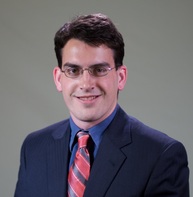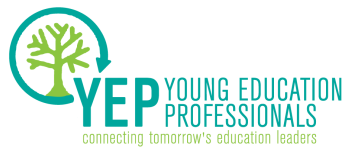 Photo courtesy of Chad Aldeman
Photo courtesy of Chad Aldeman I was relatively lucky in this regard. When I started out as an intern at Education Sector, Kevin Carey assigned me the task of learning everything I could about state higher education accountability systems. I spent my summer on state websites looking at all the information they collect and figuring out what they do with it (there’s actually some interesting stuff hiding out in boring-looking .pdf reports buried on state websites). It wasn’t my area of interest when I started, but over time I built up a knowledge base and was able to use what I learned to develop other, related projects.
I’m passionate about education policy but have been reluctant to stick to only one topic within it. My advice would be to pick something to focus on, read everything you can, reach out to the people you admire working on the issue, and then don’t be afraid to use your new-found knowledge in writing or presentations.
As a writer, credibility is so important, but in the education field, I've personally found that credibility is often tied to how many years you spent in the classroom. Having not been a teacher yourself, have you faced this conflict? How have you established your credibility as a writer about education?
You’re not alone; I think everyone in education policy faces this question. I spent a couple years training to be an elementary education teacher when I was at the University of Iowa, but I switched to education policy because I felt like that’s where my strengths were and because I didn’t think I’d be happy teaching.
The result is that I can’t intelligently speak about curriculum, scaffolding, classroom management strategies, etc., so I stay away from those issues in my work. But I do know how to recognize and interpret good research, read complex legislation and contracts, and summarize what I’ve learned for a broad audience. I trust that if I stick to those strengths—and rely on and trust others in areas where I’m weaker—I can make a positive contribution to education policy.
Speaking of credibility, you have worked for a number of important and well-established institutions: the Department of Education, Education Sector, and now Bellwether. How did you make your way into these organizations (and succeed within them) as a young policy school graduate? What were the challenges you faced?
The short answer is I was lucky, and the longer answer is that I used my connections and took advantage of opportunities. I consider myself fortunate to have found myself in the situations I’ve been in. I’ve been interested in education policy since I was 16 or 17, but I didn’t have any real mentors until I went to grad school. I was fortunate enough to be a graduate assistant for Professor Paul Manna, a widely respected researcher on education policy. He knew Andy Rotherham, a co-founder of Education Sector, and suggested I apply to intern there.
As an intern at Education Sector, I worked hard at learning everything I could about state higher education accountability systems because that’s what they needed at the time. I also took advantage of the in-house writing help that Ed Sector offered by blogging as much as I could, even as an intern. Substantively, I find writing about a topic forces me to learn more about it and helps me clarify how I actually feel about it. On a personal and professional level, I found blogging to be a great way to get my name out there, especially as a young person trying to break into the field.
For the Department and now Bellwether, I was fortunate to have strong mentors who helped me both in my current position and in finding the next step. Andy Rotherham in particular has been especially supportive, but Kevin Carey, Bill Tucker, and Tom Toch have all provided me with great opportunities and honest advice along the way.
You have written about such a broad range of topics - from teacher pension funds to James Gandolfini's legacy. What are your sources of inspiration? What are your favorite topics to research, analyze, and write about?
I read a lot, I’m addicted to Twitter, and I subscribe to a bunch of email lists that “push” a lot of information my way (Fritzwire, Politico, Stateline Daily, PEN Newsblast, the NEA’s weekly updates, plus the major think tanks and the Department of Education). Most of my inspiration comes from news stories, current events, or the latest research. If I read something and see that the common reaction isn’t quite right, or if no one has covered an aspect of a story that I think is important, I’ll often dig in a bit more and decide if I want to write something. But if you’re doing this type of writing, you have to either be really timely or really original, and ideally you should be both. That’s hard to do, so I end up having a lot more ideas for blogs than I do actually finished content.
Another source of material comes from new data sources or complex documents. I did a series of posts on FAFSA (the Free Application for Federal Student Aid) completion rates, mainly because the U.S. Department of Education was putting out this interesting data set that no one else seemed to be analyzing. I chose to calculate completion rates for D.C. public high schools because it was manageable and local, but anyone could have done something similar for the high schools in their area.
Finally, I don’t rely on media accounts alone for any important news story or research study. If there’s something I want to know about, I like to track down the original source—legislation, contract, waiver, research paper, etc. I find that reading the primary sources is the best way to really understand all the nuances of an issue. It’s a bit of a sad commentary on the state of education policy, but you’d be surprised how much you miss if you rely only on hearsay or conventional wisdom.
About those FAFSA series you wrote: What did you find most surprising during your analysis? Have you made other discoveries (from the depths of the primary sources you’ve examined) that people should be paying attention to that they aren’t?
For the FAFSA work, I was most surprised by two things. First, there's quite a bit of variation in FAFSA completion rates between schools and between states. Some D.C. public schools had 90 percent completion rates while others were down in the 20-30 percent range. At the state level, there were 20-percentage-point gaps between the highest-performing states (like Massachusetts and Rhode Island) and lower-performing ones (like Arizona, Utah, Alaska, and Vermont). Second, students tend to complete their FAFSAs in a relatively short time period in February and March. If they haven't completed their FAFSA by the end of March, they aren't very likely to do it at all. I anticipated a little more of a trickle throughout the spring, but that's really not what happens.
More generally, I've found that precise language matters a great deal, especially in legal documents like waiver requests or contracts. For example, some states and districts have promised that they'll incorporate student growth information into teacher and principal evaluation systems "where applicable." That might sound reasonable at its face, but it's actually a difficult standard to enforce. Who decides what's applicable? Does "where applicable" mean "where available (e.g. in all tested grades and subjects)" or does it mean something closer to "where it has been rigorously validated for all potential uses?" Or if you're paying attention to federal policymaking, it's important to know the differences between law, regulation, and non-regulatory guidance. You don't have to be a lawyer to appreciate all the distinctions, but you'll have a richer view of policy if you can draw these types of distinctions in your work.
Amanda Klein works for an education nonprofit, and her Q&As with local education leaders are a regular Recess feature. Send her your suggestions for future interviews via email.

 RSS Feed
RSS Feed